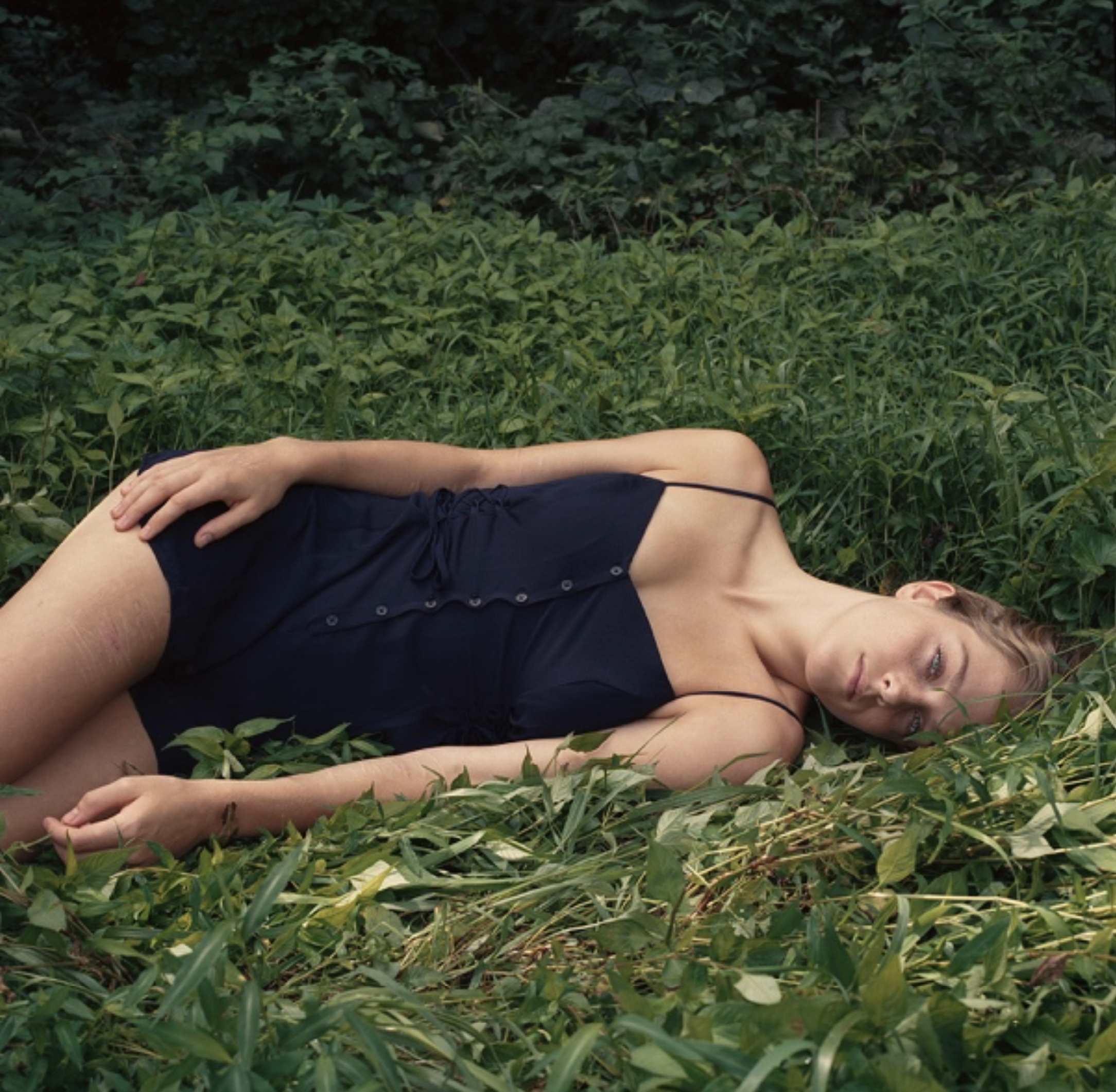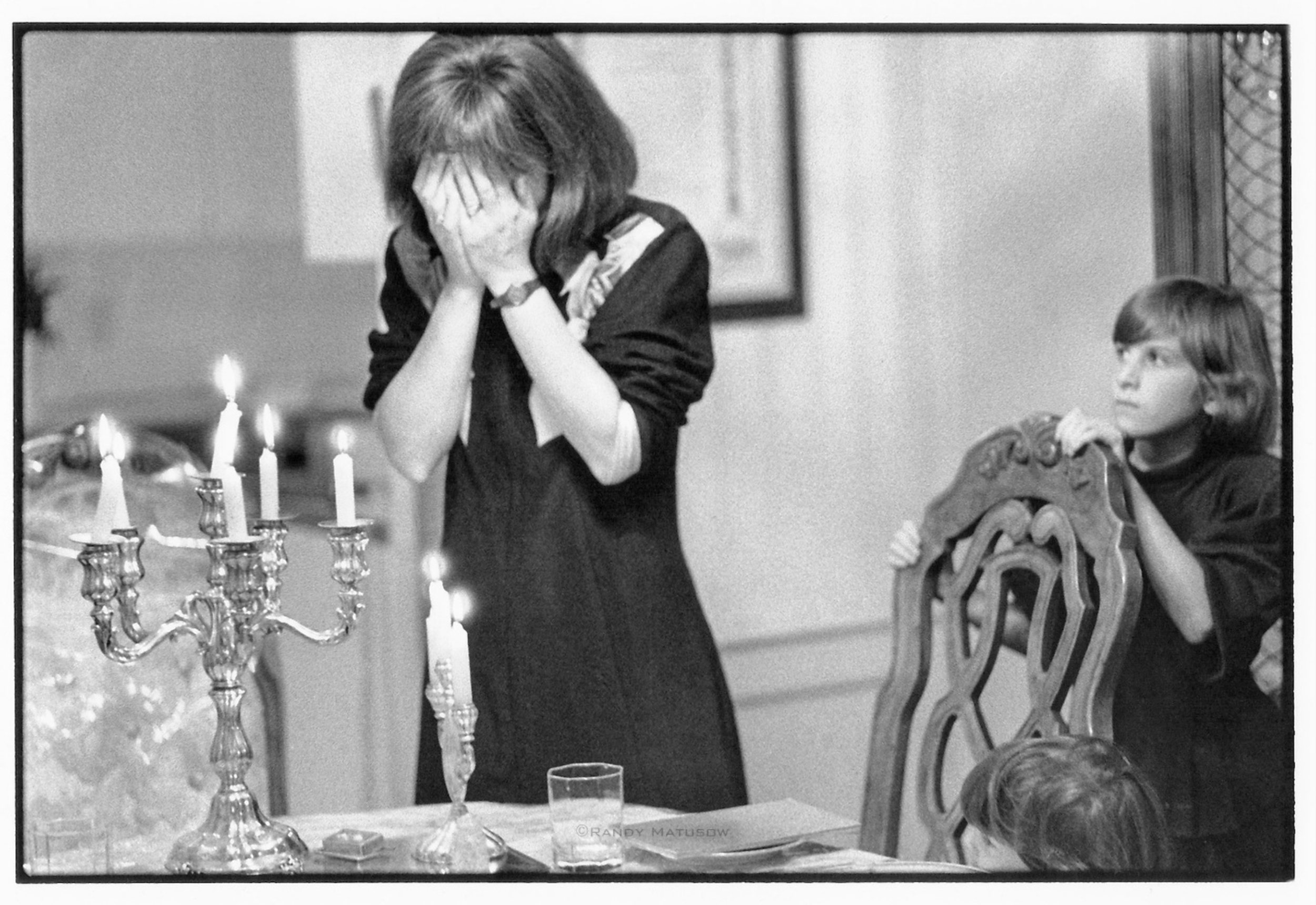Portraiture: A Formal Approach
February 19 - May 4, 2019
Reception and Lecture with Lydia Panas - Thursday, March 7 at 5pm
This exhibition approaches the art of photographic portraiture through a variety of creative techniques. The work includes formal portraiture, experimental portraiture, and unconventional techniques and settings for portrait work. Photographers include Lydia Panas, Martha Ketterer, Jean Sousa, and Randy Matusow.
JEAN SOUSA
My working process begins with the exploration of a single idea and finding the appropriate materials to express it. The exploration can focus on a formal element, a physical property, an emotional state, or a conceptual notion. What is it like to get inside of motion? What does it feel or look like to disappear? Imagine your body as a bed of flowers, a blade of grass, a smooth slab of stone. As the process unfolds, a story is constructed. The work is interesting to me in terms of what I discover about the world and myself through the process. The give and take of materials is the road map. Accidents become enlightening moments that can radically change the direction of the investigation. Technological media (film, video, photography, digital imaging) are interesting to me because they have their own set of rules that can produce the unexpected, which invites further exploration of new terrain. Art making for me is most closely aligned with being an explorer in the wilderness or a scientist in the lab. The serial image, layering of images, motion frozen in a single image, and the fluidity of time all represent an extended conversation between my photographic work and film production.
Al & Alice
Photographs of loved ones are tantalizing because they promise to give you something, but the more you look at them, the less they deliver. They intensify a feeling of wanting to be connected, but cannot satisfy it. In this project, I am trying less to capture a specific memory of someone, than the process of forgetting that person.
The Alice project originated with a trove of photographs and a cache of poems that I inherited from my late aunt, the last living relative of my parents' generation. My reclusive aunt was the family archivist who saved photographs and material objects from past generations. The archive of photographs goes back to the turn of the last century. Studio photographs are mixed in with snapshots, many are of people I never met, but even those I knew are like ghosts from another era.
This suite of Al & Alice Portraits are appropriated from hand tinted studio photographs and photo booth prints. These images were ubiquitous in their time and are a reflection of the period in terms of pose, hairstyles, and other gender tropes, as well as mid-century photographic processes. I am re-photographing and re-imagining these intimate, pocket photos and creating large-scale portraits, imbued with the softness and loss of detail that comes with one’s recollection of the past and the passage of time.
Lydia panas
My work explores our collective societal relationship to women. Through photography and video, I examine the contradictions, challenges, and caveats women face in a world struggling to embrace their power.
Our collective bias against women creates double standards and unattainable demands. As women come forward with allegations they are labeled as liars, too sensitive, too emotional, too malicious or promiscuous. The issue is compounded when women are bombarded with contradictory messages: be strong, be sexy, be beautiful, be powerful, in every aspect of their lives. My series “Sleeping Beauty” explores these themes, speaking to conflicting pressures women face. Our early hopes and expectations, the belief that we can do anything, leaves us at odds as we mature and internalize resistance from society. We learn to be both cautious and defiant – promised a kingdom, we are continually silenced. How do we stand up when we are perpetually taught to sit down?
Sleeping Beauty
The women and girls in this series lie outdoors on the ground in a vulnerable position, yet they are alert and aware. The portraits highlight the capacity for strength and knowledge that lies below the surface, unseen and unsettled, contradicting the viewers’ tendency to see the women as helpless damsels. Paying attention to what I bring to the photographic encounter, I explore the roles of power and trust on both sides of the camera. I want to describe what it feels like to be a woman, to be human, by experiencing fully the range of emotions we have the capacity to feel.
I started incorporating video in my work as a way to capture an extended portrait, as well as to introduce a performative aspect involving the viewer. To this end, the viewer becomes a collaborator in the process, a witness to this life.
Watching Serena Williams at the U.S. Open I was reminded that rage and femininity are taboo. We learn to conceal our feelings when internal leanings clash with societal expectations. I was taught as a girl that it was important to “look nice and be silent”. My practice tells me I need to speak up.
MARTHA KETTERER
Photography is a visual language, the art of storytelling. Images convey emotions and illustrate questions – stories in turn, are a thin film of images interspersed between the page and the eye of the reader. The ideas that inspire my stories always precede the physical act of picking up the camera. I visualize a concept before building, shaping and honing my inspiration into a tangible narrative.
I’m currently drawn to topics in the media or social issues that are both controversial and poignant in our time. These involve interaction and struggle between us as humans, recognizing that we are the same yet different. I like to interpret, abstract and present these commentaries in photographic narratives. Hopefully, allowing us to recognize and discuss a sensitive, emotionally charged subject in a way that furthers the conversation and opens our viewpoint.
The creative process – my muse – is a landscape that requires constant cultivation. It’s the idea that shows up at nine in the morning and keeps me up well past midnight. It’s the doorway of creativity accessed via curiosity; it lets me tell you the story in my mind.
Original Mirror
Finding oneself is an eternal question that has been asked since the beginning of time. In this age of selfies, we can create a sense of self thru a digital life. Today, thru technology, the pace of our lives is accelerated as information flows freely in an instant. Water, as the Original Mirror, reflected one’s image as told in Greek mythology and the story of Narcissus. Looking inward, allowing the water to settle, to be still and create quiet moments, harkens back to this ancient process of finding one’s self. This is slow photography, even meditative, a process of letting go and momentarily being free.
Randy matusow
My original interest in photography came from my desire to see the world, allowing my camera to be my passport. Ironically, after culling through my travel photos, I found that the images that resonated with me the most had nothing to do with exotic places. It became clear that what I have to say as a photographer resides in the familiar. With this realization I have pursued photographing my family, friends, and my own back yard. Although the images seem to vary the underlying subject is always the same: that of emotional conflict.
Mothers and Daughters
The Mother Daughter relationship is one of the most delicate and encompassing bonds, and for me, with my own mother, it is infused with conflict. I wanted to photograph that in all its guises. In the beginning my subjects came from my own family and friends, but I was able to expand that to strangers, including people I met on the street. I became close friends with them; at least for the short time they let me into their lives. Despite the camera and lights, I found my subjects inhibited poses melt into real interaction. My interest was to get past the public face and glimpse into private emotions. My photographs ended up revealing a little about my subjects but a lot about myself. Photography has always been for me a means of looking outward to see inward.























